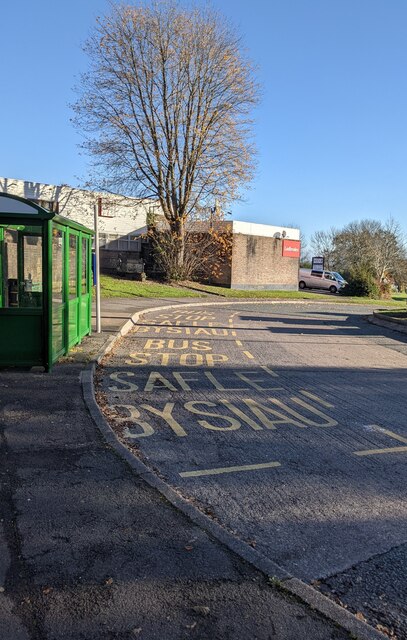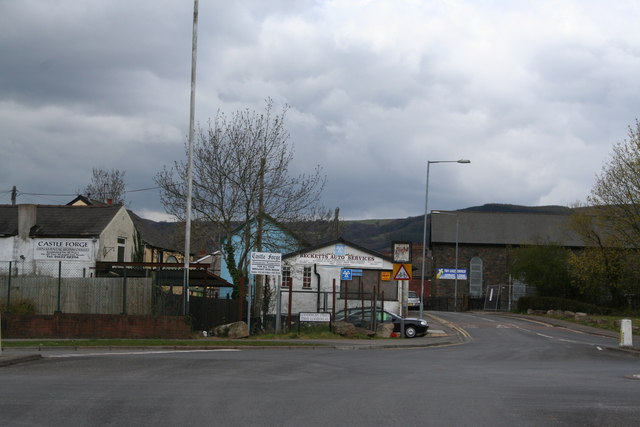Coed Waun-fyr
Wood, Forest in Monmouthshire
Wales
Coed Waun-fyr

Coed Waun-fyr, located in Monmouthshire, Wales, is a captivating woodland area that covers an expansive area of land. The name "Coed Waun-fyr" translates to "Wood, Forest" in English, which aptly describes the natural beauty and abundance of trees found within this enchanting site.
The woodland is characterized by a diverse range of tree species, including oak, beech, and ash, creating a rich and varied ecosystem. The dense canopy overhead provides a sheltered habitat for numerous wildlife species, such as birds, mammals, and insects. The forest floor is adorned with a vibrant carpet of ferns, mosses, and wildflowers, adding to the overall charm and biodiversity of the area.
Coed Waun-fyr is not only a haven for nature enthusiasts but also a popular destination for outdoor activities. The woodland offers a network of well-marked trails, allowing visitors to explore its beauty while engaging in activities like walking, hiking, and cycling. The serene atmosphere and tranquil surroundings make it an ideal spot for relaxation and contemplation.
The site is managed by the local authorities who ensure its preservation and protection. They actively work towards maintaining the delicate balance of the ecosystem, ensuring that Coed Waun-fyr remains a thriving natural habitat for generations to come.
In conclusion, Coed Waun-fyr is a captivating woodland in Monmouthshire, Wales, where nature flourishes in all its glory. With its diverse range of tree species, abundant wildlife, and well-maintained trails, it offers visitors a delightful experience and a chance to reconnect with the beauty of the natural world.
If you have any feedback on the listing, please let us know in the comments section below.
Coed Waun-fyr Images
Images are sourced within 2km of 51.643778/-3.0491714 or Grid Reference ST2794. Thanks to Geograph Open Source API. All images are credited.










Coed Waun-fyr is located at Grid Ref: ST2794 (Lat: 51.643778, Lng: -3.0491714)
Unitary Authority: Torfaen
Police Authority: Gwent
What 3 Words
///exit.pets.sums. Near Cwmbran, Torfaen
Nearby Locations
Related Wikis
Fairwater, Torfaen
Fairwater is a community and suburb of Cwmbran in the county borough of Torfaen, in south east Wales, and was built by the Cwmbran Development Corporation...
Cwmbran High School
Cwmbran High School (Welsh: Ysgol Uwchradd Cwmbran), previously known as Fairwater High School, is a state-funded and non-selective comprehensive school...
Henllys, Torfaen
Henllys means 'ancient court' with hen 'ancient' and llys 'court'. The name may refer to the former administrative court of the lordship of Machen Today...
Coed Eva
Coed Eva (Welsh: Coed Efa) is a suburb of Cwmbran in Torfaen County Borough, Wales. It lies in the preserved county of Gwent and within the historic boundaries...
Greenmeadow
Greenmeadow is a suburb of Cwmbran in the county borough of Torfaen, within the historic county boundaries of Monmouthshire, southern Wales, United Kingdom...
St Dials
St Dials is a suburb of Cwmbran in the county borough of Torfaen, in south-east Wales. == History == Nothing is known about the Saint after which the suburb...
Cwmbran Central
Cwmbran Central is a community in the new town of Cwmbran, Torfaen, South Wales. It had a population of 9,947 as of the 2011 United Kingdom census. �...
Two Locks
Two Locks is a suburb of Cwmbran in the county borough of Torfaen, in south-east Wales. The locks in question are part of the Monmouthshire & Brecon Canal...
Nearby Amenities
Located within 500m of 51.643778,-3.0491714Have you been to Coed Waun-fyr?
Leave your review of Coed Waun-fyr below (or comments, questions and feedback).










